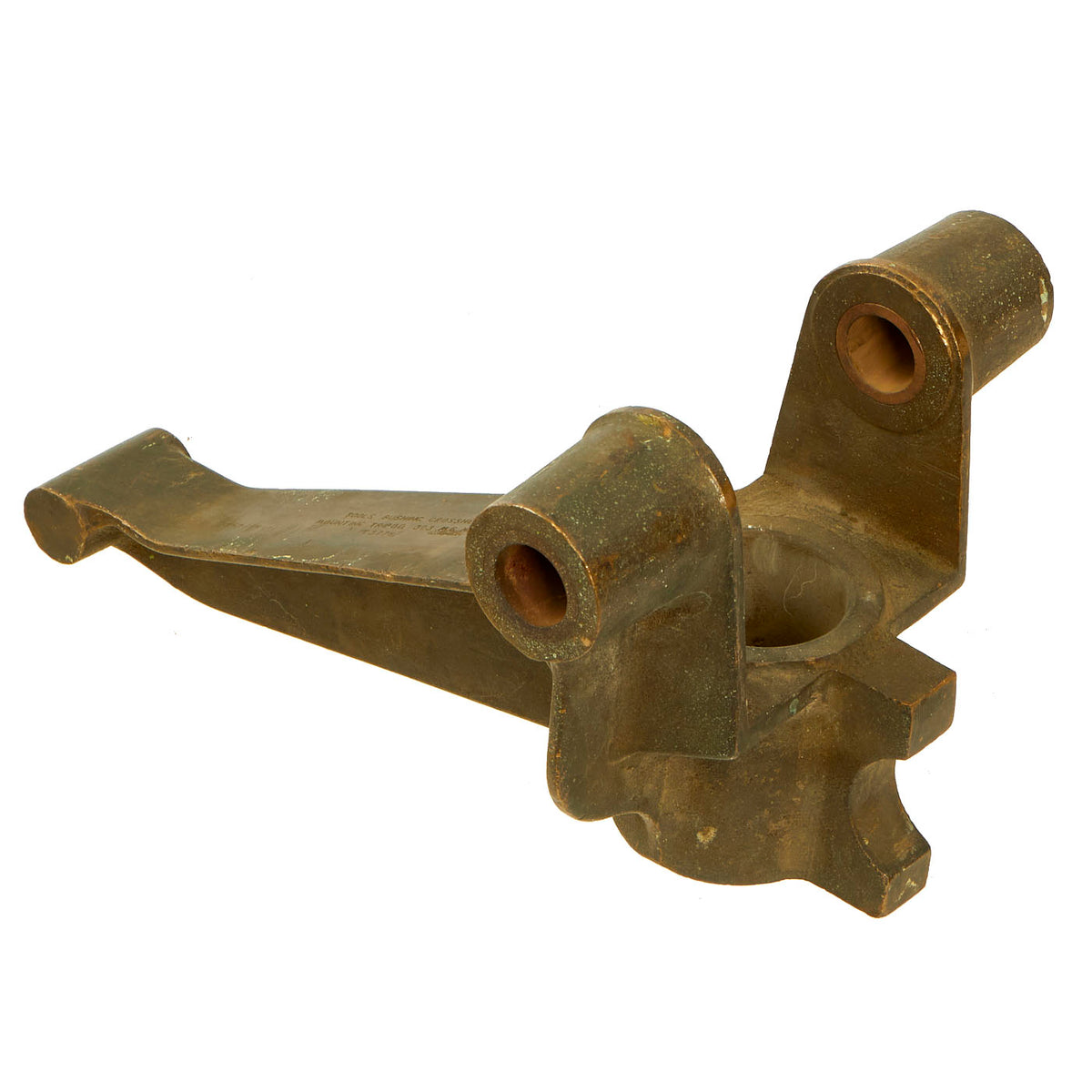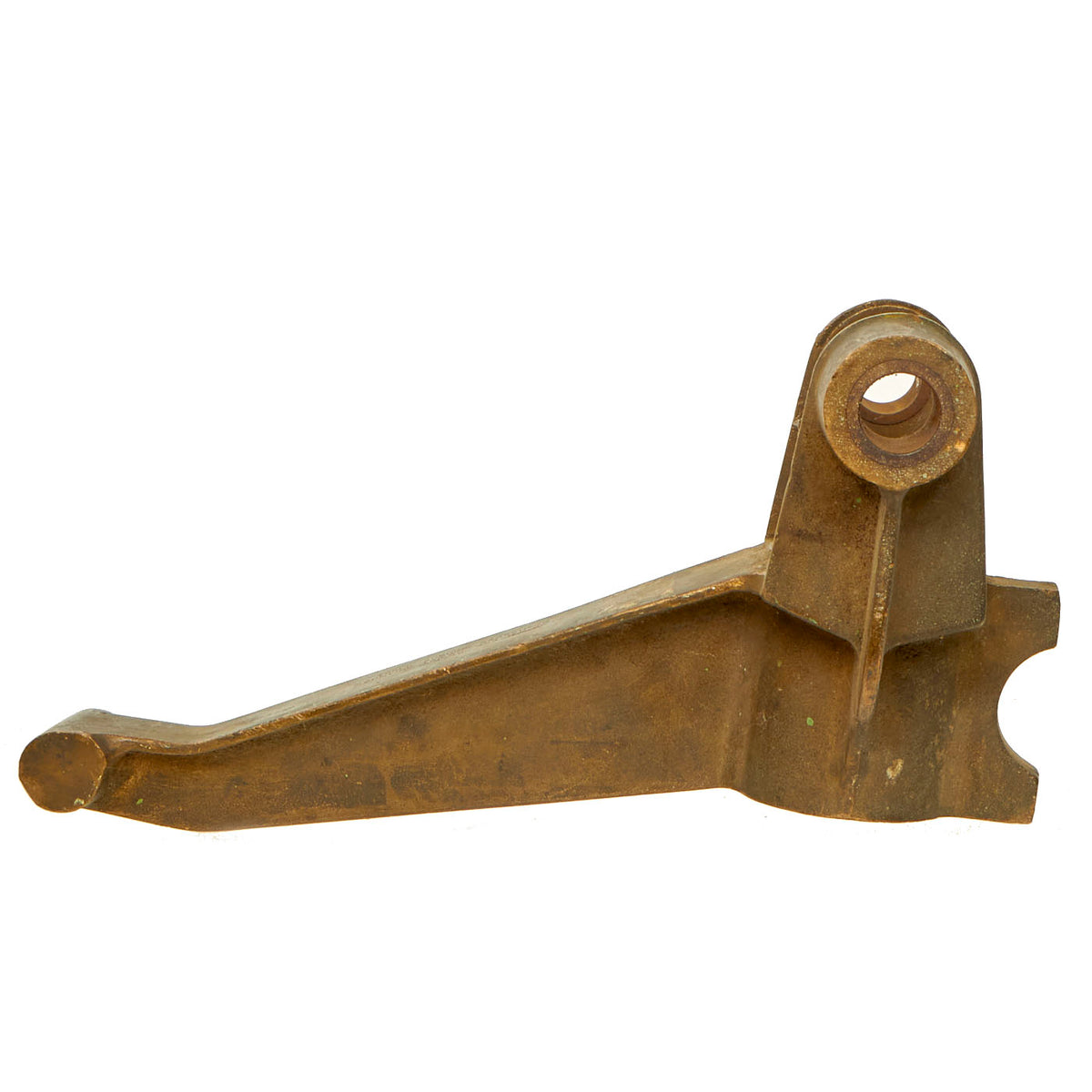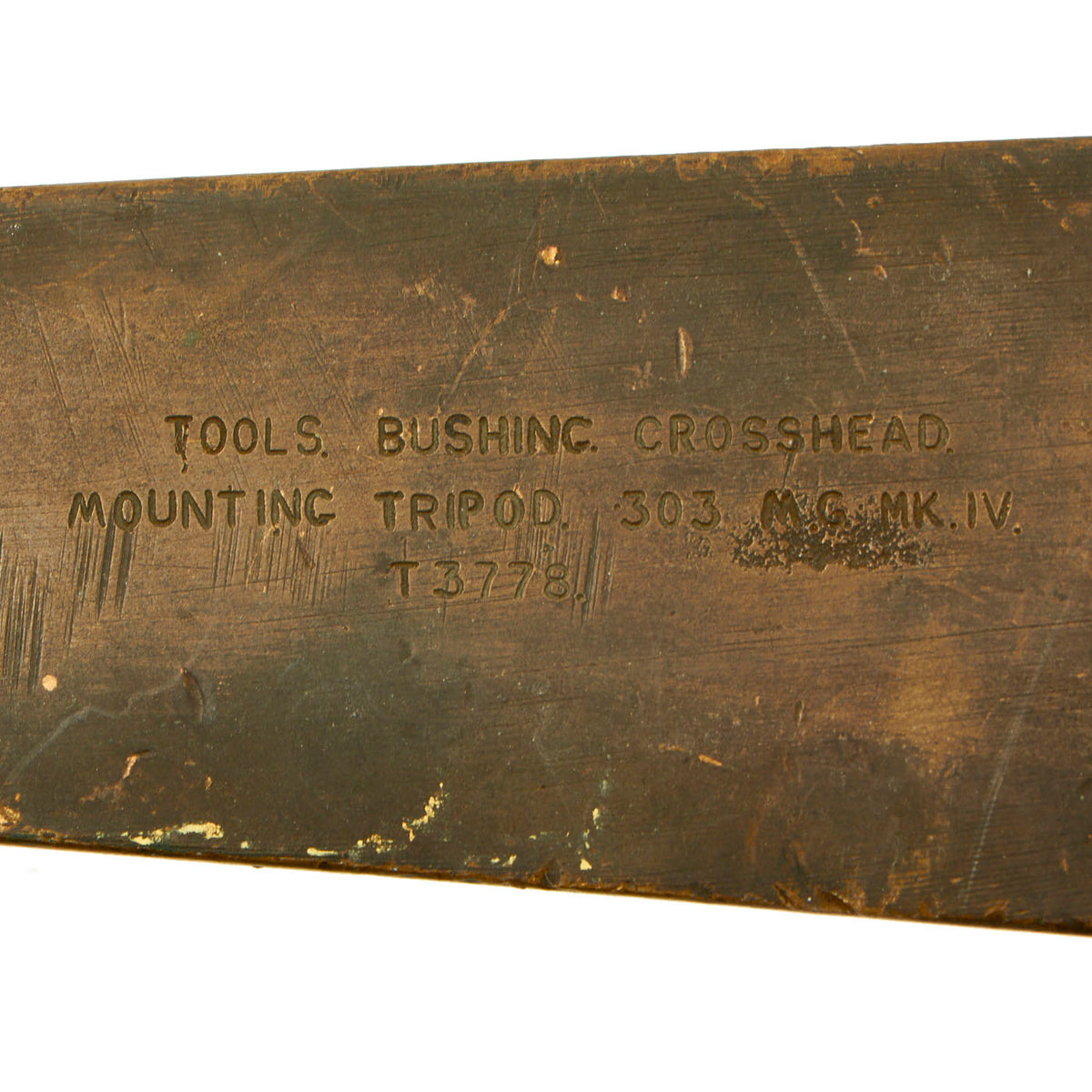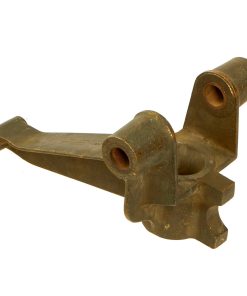Original British WWII Vickers MMG Brass Tripod Crosshead Bushing Alignment Tool Original Items
$ 295,00 $ 118,00
Original Item: Only One Available. The .303 Vickers MMG was the main British infantry machine guns used during WWII. The tripod utilized a tripod made with a central brass body, with steel legs, and a brass crosshead. While steel was stronger, brass could be cast and machined in a much more cost effective manner. However specific wear points were fitted with steel bushings to ensure that they did not quickly wear when in contact with the steel cross pins.
Over time, these bushings could wear out, and the brass crossheads could get damaged and need repair. Many tools were made for servicing the tripods, and this brass tool was one of those. It looks somewhat like a tripod crosshead itself, and it is marked clearly on the top:
TOOLS. BUSHING. CROSSHEAD.
MOUNTING TRIPOD 303 M.G. MK IV.
T3778.
This is a tool / fitting that the tripod crosshead fits inside for helping to remove and install new bushings on the front end of the crosshead. These bore the full force of the recoil of the gun, and would suffer the most wear. The tool itself has steel bushings inside the brass extensions on the top, which are used to guide the bushing tools.
The tool is in very good condition, with a lovely aged brass patina.
The Vickers machine gun or Vickers gun is a name primarily used to refer to the water-cooled .303 inch (7.7 mm) machine gun produced by Vickers Limited, originally for the British Army. The machine gun typically required a six to eight-man team to operate: one to fire, one to feed the ammunition, the rest to help carry the weapon, its ammunition and spare parts. It was in service from before the First World War until the 1960s.
The weapon had a reputation for great solidity and reliability. Ian V. Hogg, in Weapons & War Machines, describes an action that took place in August 1916, during which the British Army’s 100th Company of the Machine Gun Corps fired their ten Vickers guns continuously for twelve hours. Using 100 new barrels, they fired a million rounds without a single breakdown. “It was this absolute foolproof reliability which endeared the Vickers to every British soldier who ever fired one.”
The Vickers machine gun was based on the successful Maxim gun of the late 19th century. After purchasing the Maxim company outright in 1896, Vickers took the design of the Maxim gun and improved it, reducing its weight by lightening and simplifying the action and substituting components made with high strength alloys. A muzzle booster was also added.
The British Army formally adopted the Vickers gun as its standard machine gun on 26 November 1912, using it alongside their Maxims. There were still great shortages when the First World War began, and the British Expeditionary Force was still equipped with Maxims when sent to France in 1914. Vickers was, in fact, threatened with prosecution for war profiteering, due to the exorbitant price it was demanding for each gun. As a result, the price was slashed. As the war progressed, and numbers increased, it became the British Army’s primary machine gun, and served on all fronts during the conflict. When the Lewis Gun was adopted as a light machine gun and issued to infantry units, the Vickers guns were redefined as heavy machine guns, withdrawn from infantry units, and grouped in the hands of the new Machine Gun Corps.
After the First World War, the Machine Gun Corps (MGC) was disbanded and the Vickers returned to infantry units. Before the Second World War, there were plans to replace the Vickers gun; one of the contenders was the 7.92 mm (.312 in) Besa machine gun (a Czech design), which eventually became the British Army’s standard tank-mounted machine gun. However, the Vickers remained in service with the British Army until 30 March 1968. Its last operational use was in the Radfan during the Aden Emergency.
Fast Shipping with Professional Packaging
Thanks to our longstanding association with UPS FedEx DHL, and other major international carriers, we are able to provide a range of shipping options. Our warehouse staff is expertly trained and will wrap your products according to our exact and precise specifications. Prior to shipping, your goods will be thoroughly examined and securely secured. We ship to thousands clients each day across multiple countries. This shows how we're dedicated to be the largest retailer on the internet. Warehouses and distribution centres can be located throughout Europe as well as the USA.
Note: Orders with more than one item will be assigned a processing date depending on the item.
Before shipping before shipping, we'll conduct a thorough inspection of the items you have ordered. Today, the majority of orders will be delivered within 48 hours. The delivery time will be between 3-7 days.
Returns
The stock is dynamic and we cannot completely manage it because multiple stakeholders are involved, including our factory and warehouse. So the actual stock may alter at any time. It's possible that you may not receive your order once the order has been made.
Our policy is valid for a period of 30 days. If you don't receive the product within 30 days, we are not able to issue a refund or an exchange.
You can only return an item if it is unused and in the same state as the day you received it. You must have the item in its original packaging.
Related products
Uncategorized
Uncategorized
Uncategorized
Uncategorized
Armored Burgonet Helmet & Polearm from Scottish Castle Leith Hall Circa 1700 Original Items
Uncategorized
Angolan Rebel 1970s era 60mm Inert Display Mortar from Angolan Civil War Original Items
Uncategorized
Uncategorized
Uncategorized
Uncategorized
Uncategorized
Uncategorized
Uncategorized
Uncategorized
Uncategorized
Uncategorized
Uncategorized
Uncategorized
Band of Brothers ORIGINAL GERMAN WWII Le. F.H. 18 10.5cm ARTILLERY PIECE Original Items
Uncategorized
Australian WWII Owen MK1 Machine Carbine SMG Custom Fabricated Replica with Sling Original Items
Uncategorized
Armoured Fighting Vehicles of the World: AFVs of World War One (Hardcover Book) New Made Items












































































